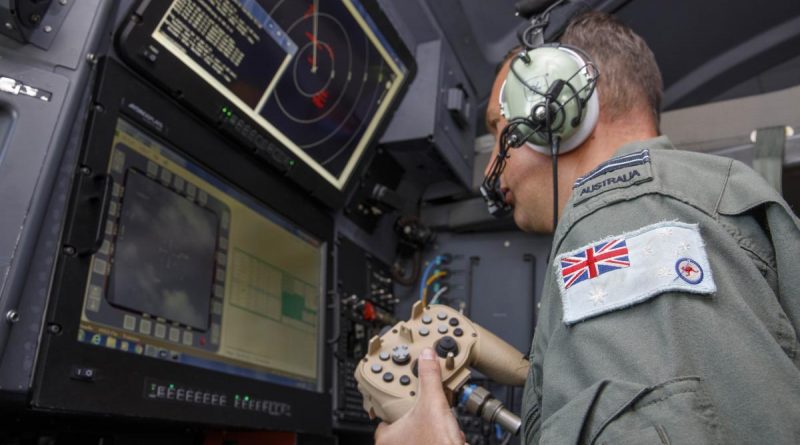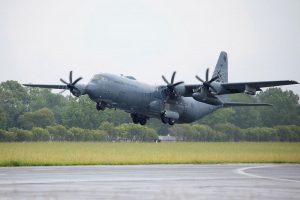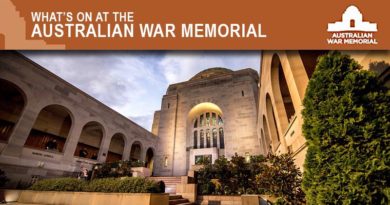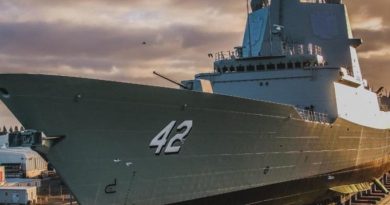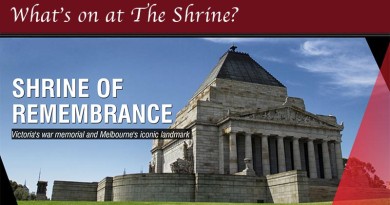Hercules brings unique insight to Tonga response
Share the post "Hercules brings unique insight to Tonga response"

A specially-modified Royal Australian Air Force C-130J Hercules transport aircraft has proven its value over Tonga following the underwater volcanic eruption on January 15.
CAPTION: RAAF combat systems officer Flight Lieutenant Cameron McKinnon works at the C-130J Hercules aircraft’s augmented crew station to capture imagery of the damage in Tonga. Story by Eamon Hamilton. Photo by Sergeant David Gibbs.
Able to livestream video across the globe, the C-130J Hercules and its crew flew a 12-hour mission on January 18 to record the damage caused by the Hunga Tonga-Hunga Ha’apai underwater volcano.
The Hercules – serial number A97-448 – is operated by No. 37 Squadron, and is fitted with a variety of systems as part of a prototype trial.
Wing Commander Anthony Kay, Commanding Officer of No. 37 Squadron, said the aircraft left RAAF Base Richmond for the 3500km flight to Tonga.
“The crew remained over Tonga for two hours, recording video of the damage to Tongan communities and infrastructure, and livestreaming that vision to Headquarters Joint Operations Command in Australia,” Wing Commander Kay said.
“In this role, the C-130J’s flexibly supplemented the imagery brought back by RAAF P-8A Poseidon and Royal New Zealand Air Force P-3K Orion surveillance aircraft.
“These reconnaissance missions have built a clearer picture of what follow-on response is required during the relief effort, and where it needs to be delivered.”

CAPTION: RAAF No. 37 Squadron pilot Flight Lieutenant Jack Woodrow flies along the Tongan coast to assess damage after the eruption of the Hunga-Tonga-Hunga-Ha’apai volcano.
The Hercules mission on January 18 was supported by No. 83 Squadron in Australia, which was able to stream the vision to Defence personnel back in Australia.
An imagery specialist from No. 464 Squadron was also on board the Hercules and sent high-quality photos back to Australia during the flight.
“After recording imagery of Tonga, the crew then flew another 2000km to land in Auckland, before conducting another survey flight on January 20,” Wing Commander Kay said.
“Our Hercules crews have generations of experience in delivering disaster assistance across the region, but this capability is yielding new ways to support the Pacific Island community.”
The Hercules is one of six to be fitted with a Ka-Band satellite communications (SATCOM) antenna, which provides crew and passengers with high-speed global data connectivity.
The aircraft also carries an AN/AAQ-28(V) Litening pod that records video during day and night-time conditions.
CAPTION: A Royal Australian Air Force C-130J Hercules aircraft departs RAAF Base Richmond, New South Wales, to assist the Tonga Government after the eruption of the Hunga-Tonga-Hunga-Ha’apai volcano. Photo by Corporal Kylie Gibson.
Inside the Hercules cockpit, an augmented crew station allows a combat systems officer to receive video from the Litening pod and stream it back via the SATCOM.
A97-448 is also one of several Hercules aircraft fitted with external fuel tanks, increasing its fuel capacity from 19 to 27 tonnes and extending its flying range and loiter time on long missions.
Wing Commander Kay said this Hercules had been progressively modified since 2018.
“In November 2021, we used this aircraft in an Australia-based trial that quickly morphed into a mission to support flood-affected communities in regional NSW,” Wing Commander Kay said.
“The experience we’re now gaining over Tonga will further inform how we provide this capability, and how Defence is able to use No. 37 Squadron on operations.”
“Given the speed we’ve managed to get this prototype capability ready to support operations, it was great to see how quickly the analysts at No. 83 Squadron were able to use it to best present the product.”
.
.

.
.
Share the post "Hercules brings unique insight to Tonga response"

